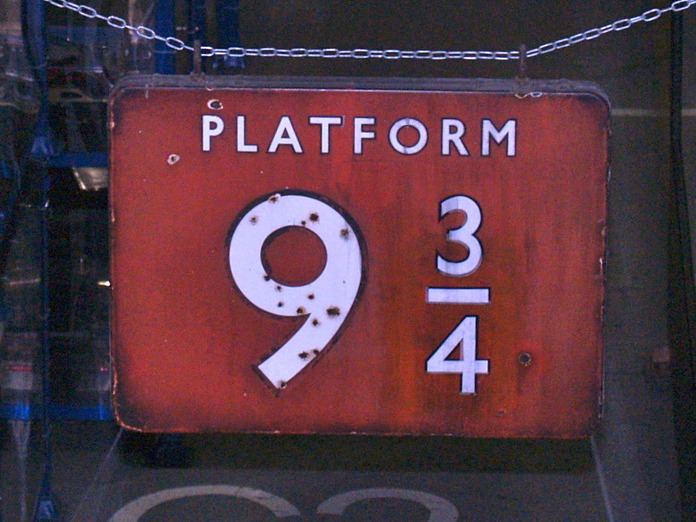Hello Maha,
I thought you might be interested in some photos and information I have about the Harry Potter films. I gathered some of the photos and information while I was in the United Kingdom in 2010.
This is Kings Cross Station in London. It's the railway station used in the Harry Potter films when Harry had to catch the train to Hogwarts School of Witchcraft and Wizardry. In the first film you see Harry and Hagrid crossing a bridge over the platforms. When I was there I couldn't cross it as they were starting to pull it down.
Schools and students have permission to use this graphic for non-commercial, educational purposes.
Do you recognise the next photo?
The Platform 9 3/4 sign from the movie was stored in the National Railway Museum in York. It had hung on the platform at Kings Cross Station.
Schools and students have permission to use this graphic for non-commercial, educational purposes.
While in London, I looked for signs of dragons but the next photo was the closest I could find.
Maybe Harry could cast a spell and bring the dragon to life.
Schools and students have permission to use this graphic for non-commercial, educational purposes.
Did you know the Australian High Commission building, known as Australia House, in London was the original Gringott's Bank?
Sites all around England and Scotland were used in the film.
Look at the next photo. Do you know this railway station?
This is Goathland station on the North Yorkshire Moors Railway. Whenever Harry travelled by the Hogwarts Express, he ended up at this station, said to be the closest to Hogwarts. In the films, it was known as Hogsmeade.
Schools and students have permission to use this graphic for non-commercial, educational purposes.
Now look at the next photo.
This is a photo of part of Edinburgh Castle in Scotland. It wasn't used in the films but doesn't it remind you of Hogwarts? Like this castle, Hogwarts was high up on a mountain top. It's thought by some J. K. Rowling created Hogwarts using ideas from buildings around Edinburgh.
Schools and students have permission to use this graphic for non-commercial, educational purposes.






